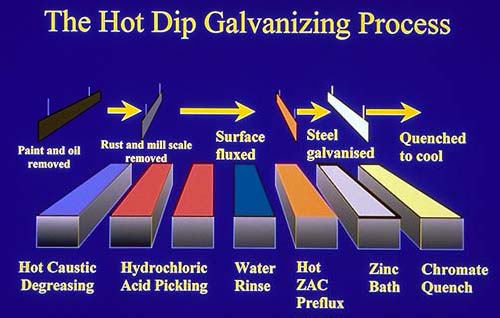Steel is an alloy consisting mostly of iron and when iron comes in contact with oxygen it forms iron oxide or rust. Steel is used in a number of things today. It is used to construct buildings, infrastructure, automobiles, ships, machines, appliances and much more.
There are many ways in order to prevent steel from rusting such as electroplating and zinc coating. Hot dip galvanizing (which is also known as “ชุบสังกะสีแบบจุ่มร้อน“ in the Thai language) has become widely popular owing to its effectiveness when it comes to corrosion protection. Painting is another way to prevent rust and is used mostly on automobiles, appliances and sometimes even on buildings. Metallizing is another expensive process where zinc is sprayed onto the steel.

Image Source: Google
Galvanizing is one of the most common means of rust prevention and is widely used these days. But sometimes when galvanizing objects, especially on scratched surfaces, the zinc or tin does not stick at seems, holes or joints of an object.
Hot dip galvanizing has become widely popular owing to its effectiveness when it comes to corrosion protection. In fact, in recent times, the term “galvanizing” is being used to refer to hot dip galvanizing. In this method, a four-layer corrosion resistant finish or surface is produced on a steel base using zinc by an electrochemical process.
The first three layers used are zinc-iron alloys and the fourth is pure zinc. The zinc-iron alloy increases the strength of the steel and the final layer of pure steel prevents any form of corrosion. The reason behind the use of zinc is that Zinc is a sacrificial anode that has more negative electrode potential then steel. This means the zinc will sacrifice itself to prevent the corrosion of steel.
The problem with paints and other coats occurs when the coated object gets scratched or damaged. A scratch exposes the base steel to moisture and this results in corrosion. Once rust appears in one spot of a surface, it spreads all over the surface. This rust spreads under the paint or any other coat, causing the paint to peel away in due time.